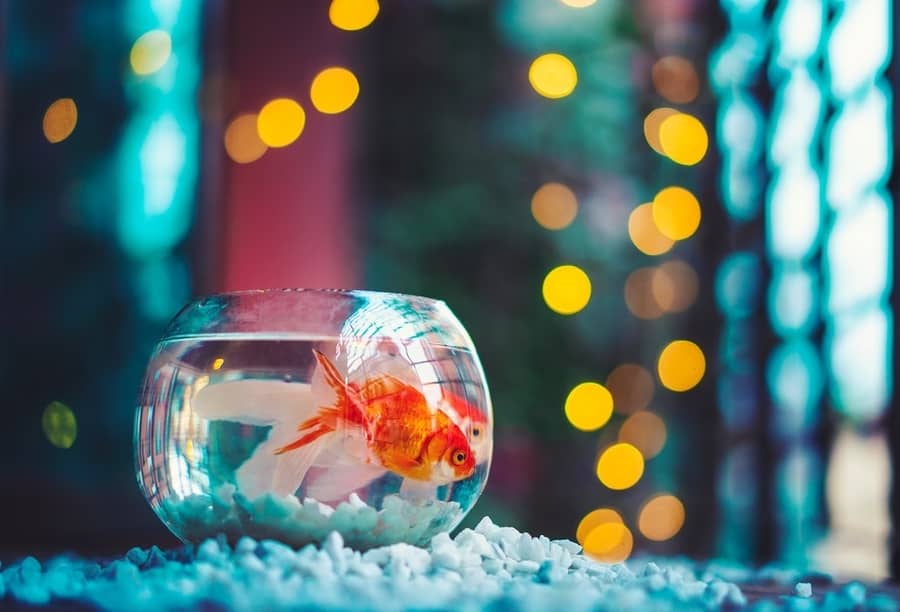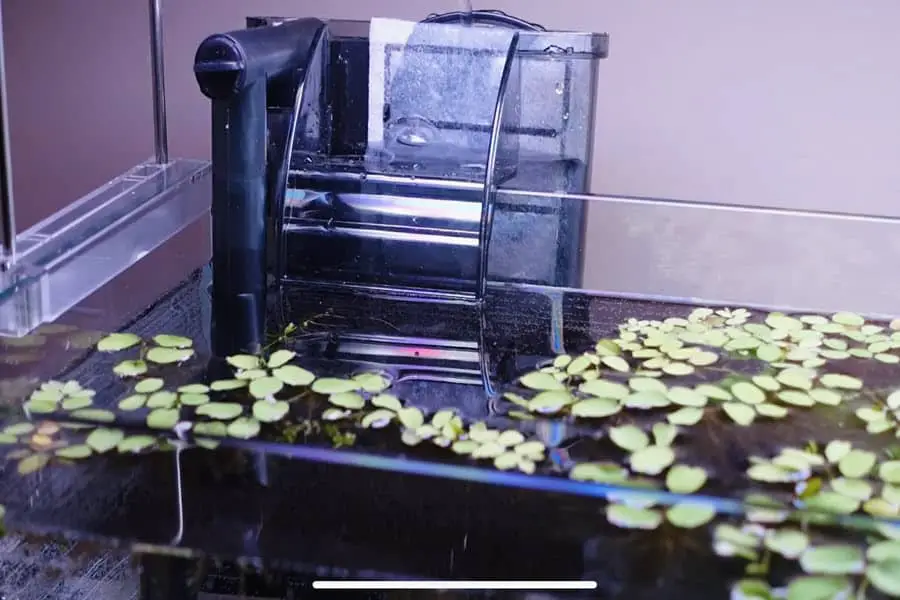Can Goldfish Live Without A Filter?
This post may contain affiliate links.

Goldfish are incredibly quiet and low-maintenance pets. Their depiction is usually a calm fish in a tiny bowl filled with colorful rocks. However, like any other animal, goldfish require the highest level of care, which begins with the quality of the water it lives in.
A goldfish can survive in a bowl without a filter for a few days. However, its quality of life would be affected. Goldfish consume plenty of feed and, as a result, produce a lot of waste. Keeping a goldfish in the water without a filter will harm and eventually kill it as the water becomes polluted.
In the rest of this article, we’ll take a close look at how a goldfish filter works and how long a goldfish can survive without a filter. We’ll also discuss how to choose a filter, how to care for a goldfish without a filter, and provide you tips on how to maintain your filter properly.
How Long Can Goldfish Live Without a Filter?
The answer to this question isn’t completely straightforward. Several factors determine how long a goldfish can live without a filter. Here are some of them:
- The size of the tank or bowl
- The number of goldfish inside the tank
- The size of the fishes inside the tank
- How the bowl is maintained
A goldfish kept in a healthy filtered environment can live up to 15 to 20 years. When kept without a filter or in unhealthy conditions, a goldfish can only survive for about 2 to 3 years. A goldfish will only live for about five years if kept in a large filtered bowl.
As a result, keeping a goldfish in a bowl is not a great idea. Bowls sometimes harbor lots of waste, leading to an increase in nitrate, nitrogen, and toxins that might eventually kill the goldfish. Some Goldfish owners underestimate the maximum size their goldfish can reach; some species can grow up to 12 inches (1 foot), while others reach 8 inches (0.67 feet).
How Does a Goldfish Filter Work?
A goldfish filter is a type of system or mechanism that keeps the water of the fish clean, safe, and aerated. There are several types of filters, and each has a different mechanism. Let’s take a look at the different filters available.
- Dry sump filters: The dry-sump filters are very complex to construct and require lots of research and commitment. These filters are often drilled through the tanks, and this setup is a permanent one. Water enters the sump from the tank with the aid of gravity. It then passes through biological media for proper filtration and finally goes back to the tank.
- Sponge filters: A sponge filter uses an air-stone to draw water through an internal sponge. This internal sponge of this filter is not strong. Experienced goldfish owners mostly use this type of filter. The airstone or internal sponge setup is used in wide ponds because of the water factor and toxicity. This filter type also requires frequent change of water, ensuring good water quality.
- Canister filters: Just like the dry-sump filters, the canister filters work with gravity. These filters are always beneath the tank, and water enters them through gravity, undergoes filtration, and is pumped back into the tank. These filters are a little pricey and require strong and sturdy aquariums.
- HOB filters: The HOB filters are the most popular because of their very affordable price. Unfortunately, these filters don’t use quality cartridges and are not very suitable for goldfish.
Related articles:
How to Choose a Goldfish Filter?

Getting a filter for your goldfish is one recommended care-take step for your pet goldfish. Filters help clean up the water your fish live in and enhance the living style, thereby giving it a longer life. As much as this may excite you to run to a physical or online store to get one, there are certain things to consider when buying a goldfish filter. In this section, we would look at the top things to consider before getting that filter.
Method of Filtration
Before choosing your filter, it’s important to have basic knowledge of all three types of filtration methods.
- Biological filtration: In this type of filtration, understanding the nitrogen cycle might be helpful. A biological filtration method for goldfish works with the availability of good bacteria. These groups of good bacteria reduce the level of toxins produced by the goldfish, and spikes in ammonia and nitrite composition are reduced with ease with this method.
- Mechanical filtration: With this type of filtration, materials like batting, sponges, or woven clothes made of polyester are used. It acts as a way of preventing solid particles from obstructing the areas of the beneficial bacteria. Cleaning the mechanical filter on a regular basis helps to avoid the build-up of nitrates.
- Chemical filtration: Practicing this type of filtration works by using naturally obtained elements to clean or purify the water. For example, carbon acts as a detoxifier. It decontaminates the toxic chemicals in the water and reduces nitrite and ammonia.
The Capacity of the Filter
The filter to choose largely depends on the quantity or volume of water it is to work with. You wouldn’t want to get a low-efficient filter for a large pond, tank, or bowl. Such a filter would be as good as no filter.
Your filter must be able to cycle through the quantity or volume of water in the tank holding your goldfish at least ten times every hour. This means, that if you own a 10-gallon goldfish tank, you would need a filter able to cycle 100 gallons of water every hour.
Current
The flow of water or its speed through the filter you choose is also important. The more athletic type or breeds of goldfish like the Comet remain unbothered by the current. However, some less athletic goldfish types prefer a slower current in the water.
These goldfishes with longer fins catch the water current, moving them across the tank. The intense fight to withstand the pressure from the currents can weaken the goldfish and its immune system.
Safety
There are some filters designed to need frequent cleaning to prevent the build-up of debris. If this debris is left to pile up in the filter, it can increase the water’s toxin level.
If you are not available to constantly clean up your goldfish filter, choose a filter that requires less attention.
How to Maintain a Goldfish Filter?
Goldfish filters can get dirty very quickly, so it is important to maintain and clean them regularly.
With a canister filter as an example, here’s how to maintain your filter:
- Remove all attachments, including the heater and the thermometer.
- Empty the contents of the filter media into a bucket of water. Doing this ensures the contents don’t dry up, and the beneficial bacteria don’t die.
- Thoroughly clean the filter with a soft brush.
- Ensure the filter and its content dry up before assembling them back together to avoid leakage.
Besides filter maintenance, replace at least 25% of the water in the tank every 4 to 5 days. Consistent water replacement helps to remove the beneficial bacteria growing in the old water.
Conclusion
Your goldfish can live without a filter, but it is not recommended. Filters greatly improve the quality of life of goldfish and ensure a healthy, well-aerated, and safe environment for them.
There are different types of filters to choose from. It depends on the method of filtration, capacity, the material of the filter, and your tank conditions. Proper maintenance is essential to keep the filter in good condition and make the habitat safe for your pet.
Read Also:
